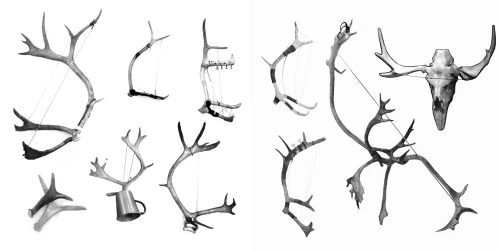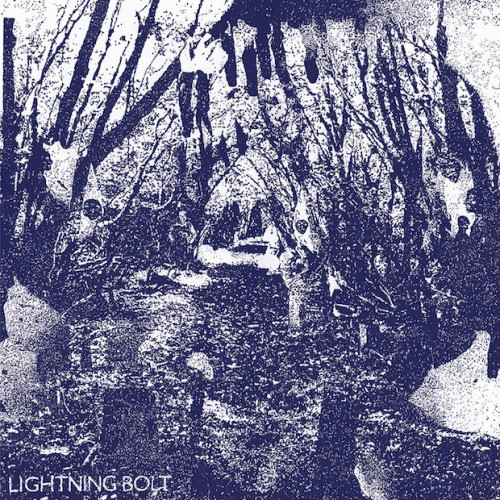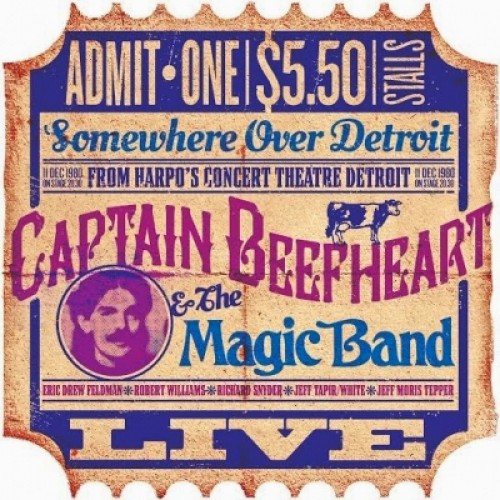
Panot
Hornorkesteret have been around more than a quarter of a century. What they do is to make instruments out of
reindeer antlers and moose skulls. They are mostly bowed string instruments, though drums feature also (no word on what the skins are made out of on my press release). That description is flat and dry and gives no idea of what an awesome sound they make.
Homemade, or I should say non-traditional, instruments tend to go one of two ways — either you get an instrument maker who obsesses over some detail of musicality that’s not available on traditional instruments (say, the proliferation of microtonal instruments) or they find make a sound and hone it. Hornorkesteret are the latter, I’d wager. While there’s clearly a sense that these are coordinated and considered compositions, they’re also using instruments that sound like the players are fighting against inconsistent tuning constantly. To repeat, it’s an awesome sound.
Main Hornorkesteret honcho Jonas Qvale was good enough to send me a previous album as well as the 2024 release, so they’re both getting reviewed.
Jehovas Vinter
 There’s a sense on this that everything is loose. Timing is held in place with a kettle drum-like sound and it’s not a record that swings but there’s loads of parallel string parts where the intonation won’t hold. Plenty of Harry Partch or Tom Waits-like sounds — though I’m conscious that neither point of reference gets across the sense of fun.
There’s a sense on this that everything is loose. Timing is held in place with a kettle drum-like sound and it’s not a record that swings but there’s loads of parallel string parts where the intonation won’t hold. Plenty of Harry Partch or Tom Waits-like sounds — though I’m conscious that neither point of reference gets across the sense of fun.
Third track “Maries Vals” is, I presume, an old waltz. But it’s got a lovely and bittersweet quality insofar as none of the instruments are quite secure enough in their intonation to hold the tune together, at least in the taut way one might expect a
Johann Strauss waltz. So it ends up something like a
Jim Henson scene,
imagining netherworldly hobbits bobbing around to.
It’s worth saying that these are well put-together albums also. “Maries Vals”, with its apparently strict rhythm, is followed by “Skogstur”, which starts with some evocative timbral scraping, a play on overtones. A rhythm is introduced, but it’s of a more spare and fleeting nature. That is to say, despite the novelty of the instruments (unless there’s some
secret world of reindeer-horn string instrument orchestras I don’t know about), these are properly composed songs and properly composed albums. Tempos are most of a piece, but these aren’t pieces that lean on the novelty of the instruments — rather the madness of the instruments is worked with, accentuated.
Closer “Fossegrimen” opens in military fashion, a 2/4 drum pounding away. Strings follow with a martial motif, but drop in and out do to scrapey sounds or just wheeze. Somehow hugely evocative of marching whilst entirely devoid of energy and carrying on regardless. It devolves ultimately into two lines of music box-alike melody. Which again perhaps suggests the ghost of Johann Strauss. Something about the unstable intonation makes this just a gorgeous wee part —
emotionally affecting and quite lovely and ceding to some overwhelming hiss from what sounds like a waterfall sample.
I’ve said ‘madness’ earlier and it’s somewhat advisedly — when this album has a sense of being improvisatory it’s closer to some outsider music-like notion of being entirely idiomatic. It’s not iconoclastic music, but like an absurdist take on some well-known ideas.
Unheimlich and sinister, but definitely
not weird for weird’s sake.
Dans Fra Dalstrøka
 Immediately a different proposition with opener “Utrøst”, insofar as the drums seem to be a snare rather than a kettle-like drum and a jazzy shuffle persists. A bass figure on ukulelebass accompanies. Those reindeer strings are still in full effect. That is, a rhythm section is providing some contrast to the instability of the rest of the orkesteret. “Dans Fra fjellstrøka” reminds me of old John Peel favourite Solex — a definite sense of being dance music, but also a sense that the melodies are wilted.
Immediately a different proposition with opener “Utrøst”, insofar as the drums seem to be a snare rather than a kettle-like drum and a jazzy shuffle persists. A bass figure on ukulelebass accompanies. Those reindeer strings are still in full effect. That is, a rhythm section is providing some contrast to the instability of the rest of the orkesteret. “Dans Fra fjellstrøka” reminds me of old John Peel favourite Solex — a definite sense of being dance music, but also a sense that the melodies are wilted.
It might be the case that the band has resolved some of the instrument tuning fun — “Krekling” retains the raspy timbres on the reindeer antler instruments (referred to as
reinsdyrgevir), but the melody seems more stable. This may be by compositional design — there’s a few more ‘conventional’ instruments here (including flute and tuned percussion), so presumably
tonal coherence was more desired. An excellent contrast with “Hauk Over Hauk” that immediately follows, which is more like a track from the first album, and has a kind of sense of falling apart that reminds me of early
I’m Being Good (which is a very good thing in my book).
Possibly standout track here is “Dill Dall Holum” — like some Jerusalem for the Styx. Big, epic, grandstandy; but also sour and intemperate. A big strident solo line because every record these day needs a heroic
reinsdyrgevir solo. It’s an odd place to occupy — at once kind of silly, but also
affecting and beautiful. Very much lovely.
And there we are. Two very excellent records. I’d say that Jehovas Vinter is probably the one that more shows off the reinsdyrgevir in its messiness and works with / against the instrument’s limitations, but Dans Fra Dalstrøka is probably a record that does enough to pull in an audience that isn’t just about ‘weird instruments’. Either very much worth your time, for my money.
-Kev Nickells-
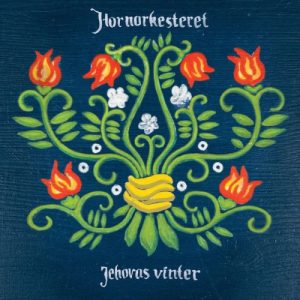 There’s a sense on this that everything is loose. Timing is held in place with a kettle drum-like sound and it’s not a record that swings but there’s loads of parallel string parts where the intonation won’t hold. Plenty of Harry Partch or Tom Waits-like sounds — though I’m conscious that neither point of reference gets across the sense of fun.
There’s a sense on this that everything is loose. Timing is held in place with a kettle drum-like sound and it’s not a record that swings but there’s loads of parallel string parts where the intonation won’t hold. Plenty of Harry Partch or Tom Waits-like sounds — though I’m conscious that neither point of reference gets across the sense of fun.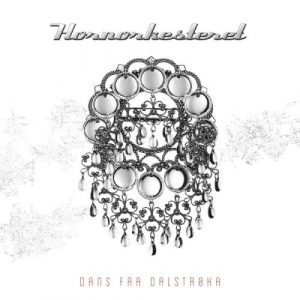 Immediately a different proposition with opener “Utrøst”, insofar as the drums seem to be a snare rather than a kettle-like drum and a jazzy shuffle persists. A bass figure on ukulelebass accompanies. Those reindeer strings are still in full effect. That is, a rhythm section is providing some contrast to the instability of the rest of the orkesteret. “Dans Fra fjellstrøka” reminds me of old John Peel favourite Solex — a definite sense of being dance music, but also a sense that the melodies are wilted.
Immediately a different proposition with opener “Utrøst”, insofar as the drums seem to be a snare rather than a kettle-like drum and a jazzy shuffle persists. A bass figure on ukulelebass accompanies. Those reindeer strings are still in full effect. That is, a rhythm section is providing some contrast to the instability of the rest of the orkesteret. “Dans Fra fjellstrøka” reminds me of old John Peel favourite Solex — a definite sense of being dance music, but also a sense that the melodies are wilted.